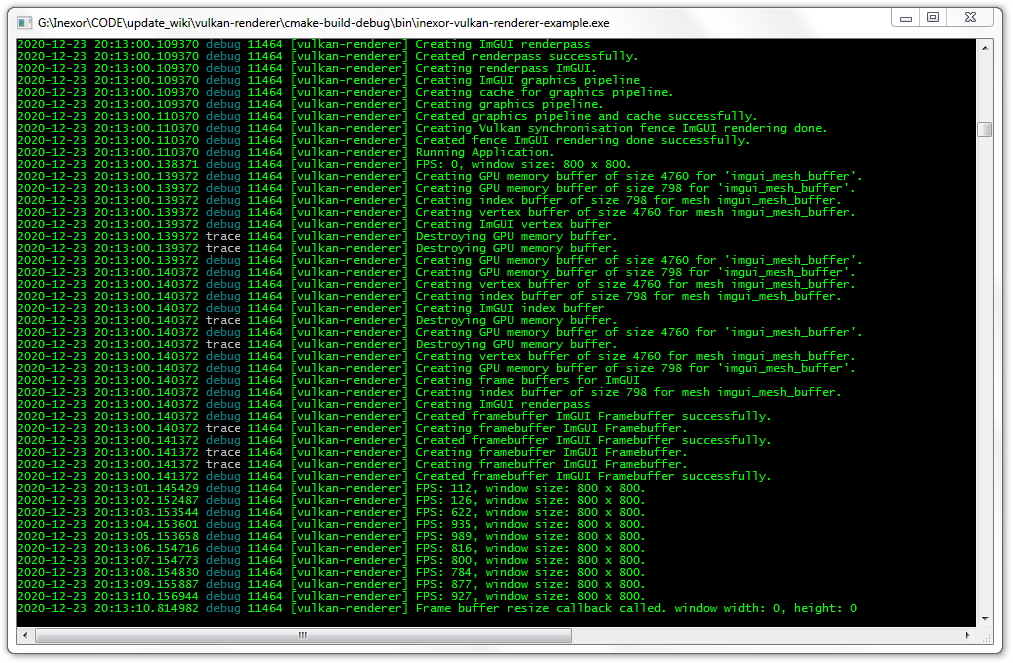Logfiles¶
Inexor uses spdlog for both console logging and logfiles.

The log output which can be seen in the console will also be written to vulkan-renderer.log in the root directory.
You can open and read this logfile with a text editor of your choice.
We are using the following log entry format %Y-%m-%d %T.%f %^%l%$ %5t [%-10n] %v.
%Yis the year.%mis the month (01 to 12).%dis the day of month (01 to 31).%Tis ISO 8601 time format (HH:MM:SS).%fis the microsecond part of the current second.%^%l%$is the color-coded log level.%5tis the thread id formatted to a string of length 5.[%-10n]is the name of the logger, limited to 10 characters.%vis the log message.
For more information, check out spdlog’s documentation about custom formatting.
Use the following rules for logging:
Don’t use
std::coutorprintfor similar. Just use spdlog instead.Place as many log messages to your code as possible.
End log messages with a
.to show that the message is finished.Use all log levels as you need it:
spdlog::trace,spdlog::info,spdlog::debug,spdlog::error,spdlog::critical.You can print variables with spdlog (see this reference) because it is based on fmt library.
Use direct API calls like
spdlog::debug("Example text here");instead of creating your own logger name for now. We will come up with a strategy for logger hierarchy later.